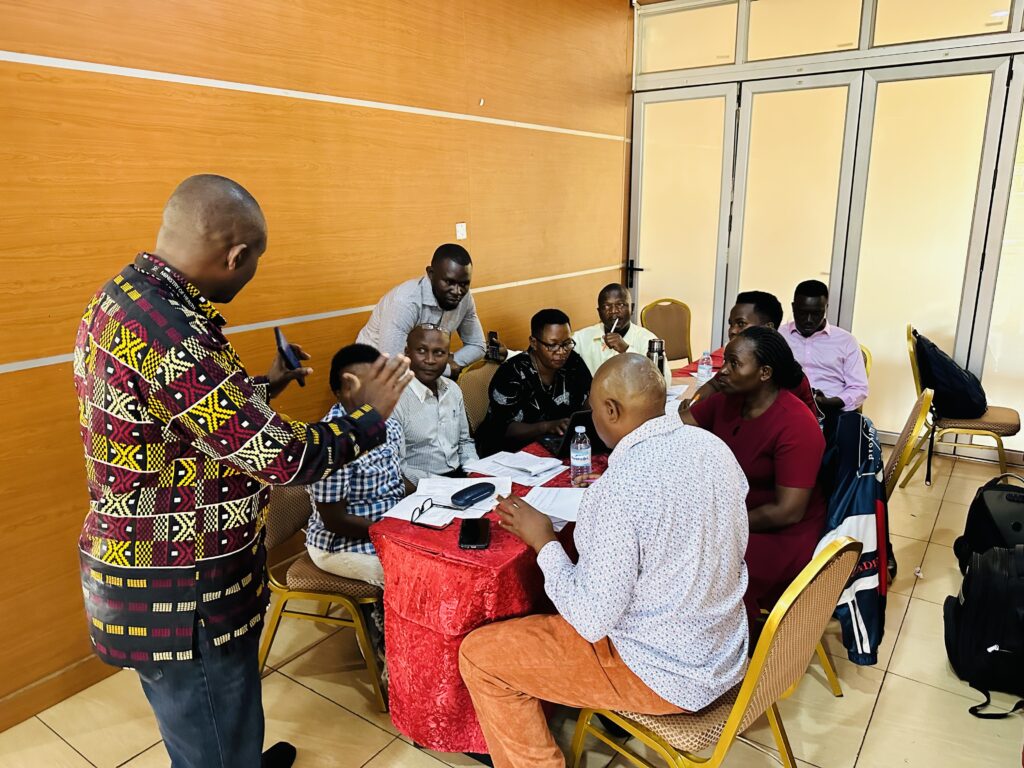
By Tim Adair, Md Zabir Hasan, Gerald Okello for ReLAB-HS
To effectively mainstream rehabilitation in both national and global health agendas, integrating rehabilitation and assistive technology (AT)-specific services at all health system levels is crucial. This process hinges largely on having reliable and timely data regarding unmet needs and service provision. Uganda’s pioneering effort to incorporate rehabilitation and AT data into its health management information systems (HMIS) and District Health Information System (DHIS2) showcases a model for providing evidence to inform and monitor the integration of rehabilitation services within health systems, thereby enhancing health care outcomes. This significant step, driven by Uganda’s Ministry of Health and supported technically and financially by Learning, Acting, and Building for Rehabilitation in Health Systems (ReLAB-HS) in partnership with the World Health Organization (WHO), is transforming Uganda’s health management and policy development.
Rehabilitation services are vital for improving quality of life for those with functional limitations at any age in life. Their integration is particularly important in Uganda, where about one in six people could benefit from these services. Existing routine data on rehabilitation and AT services within the Ugandan HMIS reflects a narrow set of indicators, limiting its utility as a reliable source of evidence for assessing the capacity and performance of the rehabilitation sector. However, the recently released WHO DHIS2 Rehabilitation Module comprises a standard set of 15 indicators that collect essential information on rehabilitation and AT services, addressing a vital gap in the Ugandan HMIS/DHIS2.
In preparation for integrating rehabilitation and AT data into the HMIS, the Ministry of Health, with ReLAB-HS support, initiated several key activities. In January 2023, a rehabilitation routine reporting readiness assessment was conducted in some regional referral health facilities, revealing a heavy reliance on paper-based data collection and reporting, hindered by infrastructure and capacity issues. This assessment highlighted the need for standardized data collection forms, training, and a coordinated reporting mechanism for rehabilitation and AT services.
January 2023 also marked a decisive step with a significant multi-stakeholder workshop, where rehabilitation professionals and representatives from health care facilities and the Ministry of Health selected all 15 WHO Rehabilitation Module indicators to be integrated into the national HMIS. In April 2023, another workshop convened experts from the rehabilitation and AT sectors, medical records specialists, and Ministry of Health representatives from the Health Information Systems and Disability and Rehabilitation Divisions. This workshop resulted in finalizing improved data collection and reporting tools tailored to collect information for the revised indicators. The revised tools were then piloted in 18 health facilities, including national and regional hospitals and primary health care centers. Meanwhile, ReLAB-HS and the WHO are supporting the Ministry of Health in developing standard operating procedures for data capture and reporting.
The approval of these tools will ensure that data related to rehabilitation and AT services will be collected and reported into the DHIS2 platform, thus providing a comprehensive overview of indicators. This will be a significant achievement that will improve data to monitor rehabilitation and AT service utilization, informing decision-making for rehabilitation policy and health systems management, while positioning Uganda as a leader in implementing the WHO Rehabilitation Module.
However, challenges in human resources, infrastructure, and assistive product provision remain, which are crucial for fully realizing the potential of this integration. ReLAB-HS and the WHO continue to provide essential support to the Ministry of Health, including:
The integration of the WHO DHIS2 Rehabilitation Module into the national HMIS in Uganda is more than just a technical upgrade; it represents a paradigm shift to provide essential evidence to support improved provision and management of rehabilitation and AT services within the health system. With this initiative, Uganda is affirmatively acknowledging the significant role of rehabilitation in public health, setting a precedent for others to follow, and contributing to the development of a more inclusive and informed health policy and practice landscape.